Impact of Ultrashort Laser Nanostructuring on Friction Properties of AISI 314 LVC
Abstract
:1. Introduction
2. Materials and Methods
2.1. Preparation of Samples
2.2. Laser-Treated Processing
2.3. Tribological Test
2.4. Morphological Characterization (SEM and AFM)
3. Results and Discussion
3.1. Morphological Analysis
3.2. Tribological Test in Dry Conditions
4. Conclusions
Author Contributions
Funding
Acknowledgments
Conflicts of Interest
References
- Holmberg, K.; Erdemir, A. Influence of tribology on global energy consumption, costs and emissions. Friction 2017, 5, 263–284. [Google Scholar] [CrossRef]
- Abdel-Aal, H.A.; El Mansori, M. Tribological analysis of the ventral scale structure in a python regius inrelation to laser textured surfaces. Surf. Topogr. Metrol. Prop. 2013, 1, 015001. [Google Scholar] [CrossRef]
- Reif, W.E.; Dinkelacker, A. Hydrodynamics of the squamation in fast swimming sharks. Neues Jahrbuch Geol. Palaeontol. Abhandlungen 1982, 164, 184–187. [Google Scholar] [CrossRef]
- Ancona, A.; Joshi, G.S.; Volpe, A.; Scaraggi, M.; Lugarà, P.M.; Carbone, G. Non-Uniform Laser Surface Texturing of an Un-Tapered Square Pad for Tribological Applications. Lubricants 2017, 5, 41. [Google Scholar] [CrossRef] [Green Version]
- Burrow, G.M.; Gaylord, T.K. Multi-Beam Interference Advances and Applications: Nano-Electronics, Photonic Crystals, Metamaterials, Subwavelength Structures, Optical Trapping, and Biomedical Structures. Micromachines 2011, 2, 221–257. [Google Scholar] [CrossRef]
- Milles, S.; Soldera, M.; Voisiat, B.; Lasagni, A.F. Fabrication of superhydrophobic and ice-repellent surfaces on pure aluminium using single and multiscaled periodic textures. Sci. Rep. 2019, 9, 1–13. [Google Scholar] [CrossRef] [PubMed] [Green Version]
- Bonse, J.; Kruger, J.; Höhm, S.; Rosenfeld, A. Femtosecond laser-induced periodic surface structures. J. Laser Appl. 2012, 24, 042006. [Google Scholar] [CrossRef]
- Buividas, R.; Mikutis, M.; Juodkazis, S. Surface and bulk structuring of materials by ripples with long and short laser pulses: Recent advances. Prog. Quantum Electron. 2014, 38, 119–156. [Google Scholar] [CrossRef]
- Gnilitskyi, I.; Orazi, L. Mechanisms of high-regularity periodic structuring of silicon surface by sub-mhz repetition rate ultrashort laser pulses. Appl. Phys. Lett. 2016, 109, 143101. [Google Scholar] [CrossRef]
- Miyaji, G.; Miyazaki, K. Origin of periodicity in nanostructuring on thin film surfaces ablated with femtosecond laser pulses. Opt. Express 2008, 16, 16265–16271. [Google Scholar] [CrossRef] [PubMed]
- Zou, T.; Zhao, B.; Xin, W.; Wang, Y.; Wang, B.; Zheng, X.; Xie, H.; Zhang, Z.; Yang, J.; Guo, C.-L. High-speed femtosecond laser plasmonic lithography and reduction of graphene oxide for anisotropic photoresponse. Light. Sci. Appl. 2020, 9, 1–11. [Google Scholar] [CrossRef] [PubMed] [Green Version]
- Gnilitskyi, I.; Mamykin, S.; Lanara, C.; Hevko, I.; Dusheyko, M.; Bellucci, S.; Stratakis, E. Laser Nanostructuring for Diffraction Grating Based Surface Plasmon-Resonance Sensors. Nanomaterials 2021, 11, 591. [Google Scholar] [CrossRef] [PubMed]
- Kuznietsov, O.; Tsibidis, G.; Demchishin, A.; Demchishin, A.; Babizhetskyy, V.; Saldan, I.; Bellucci, S.; Gnilitskyi, I. Femtosecond Laser-Induced Periodic Surface Structures on 2D Ti-Fe Multilayer Condensates. Nanomaterials 2021, 11, 316. [Google Scholar] [CrossRef] [PubMed]
- Sipe, J.E.; Young, J.F.; Preston, J.S.; van Driel, H.M. Laser-induced periodic surface structure. I. Theory. Phys. Rev. B 1983, 27, 1141. [Google Scholar] [CrossRef]
- Skolski, J.Z.P.; Rmer, G.R.B.E.; Obona, J.V.; Ocelik, V.; Veld, A.J.H.; de Hosson, J.T.M. Laser-induced periodic surface structures: Fingerprints of light localization. Phys. Rev. B 2012, 85, 075320. [Google Scholar] [CrossRef] [Green Version]
- Bonse, J.; Koter, R.; Hartelt, M.; Spaltmann, D.; Pentzien, S.; Höhm, S.; Rosenfeld, A.; Krüger, J. Tribological performance of femtosecond laser-induced periodic surface structures on titanium and a high toughness bearing steel. Appl. Surf. Sci. 2015, 336, 21–27. [Google Scholar] [CrossRef]
- Yasumaru, N.; Miyazaki, K.; Kiuchi, J.; Sentoku, E. Frictional properties of diamond-like carbon, glassy carbon and nitrides with femtosecond-laser-induced nanostructure. Diam. Relat. Mater. 2011, 20, 542–545. [Google Scholar] [CrossRef]
- Gnilitskyi, I.; Rota, A.; Gualtieri, E.; Valeri, S.; Orazi, L. Tribological properties of high-speed uniform femtosecond laser patterningon stainless steel. Lubricants 2019, 7, 83. [Google Scholar] [CrossRef] [Green Version]
- ASTMG77-05. Standard Test Method for Ranking Resistance of Materials to Sliding Wear Using Block-on-Ring Wear Test. 2010. Available online: https://www.nen.nl/en/astm-g77-05-2010-en-1073455 (accessed on 1 April 2021).
- Yu, C.; Yu, H.; Liu, G.; Chen, W.; He, B.; Wang, Q.J. Understanding Topographic Dependence of Friction with Micro- and Nano-Grooved Surfaces. Tribol. Lett. 2014, 53, 145–156. [Google Scholar] [CrossRef]
- Gnilitskyi, I.; Rotundo, F.; Martini, C.; Pavlov, I.; Ilday, S.; Vovk, E.; Ilday, F.Ö.; Orazi, L. Nano patterning of AISI 316L stainless steel with Nonlinear Laser Lithography: Sliding under dry and oil-lubricated conditions. Tribol. Int. 2016, 99, 67–76. [Google Scholar] [CrossRef]

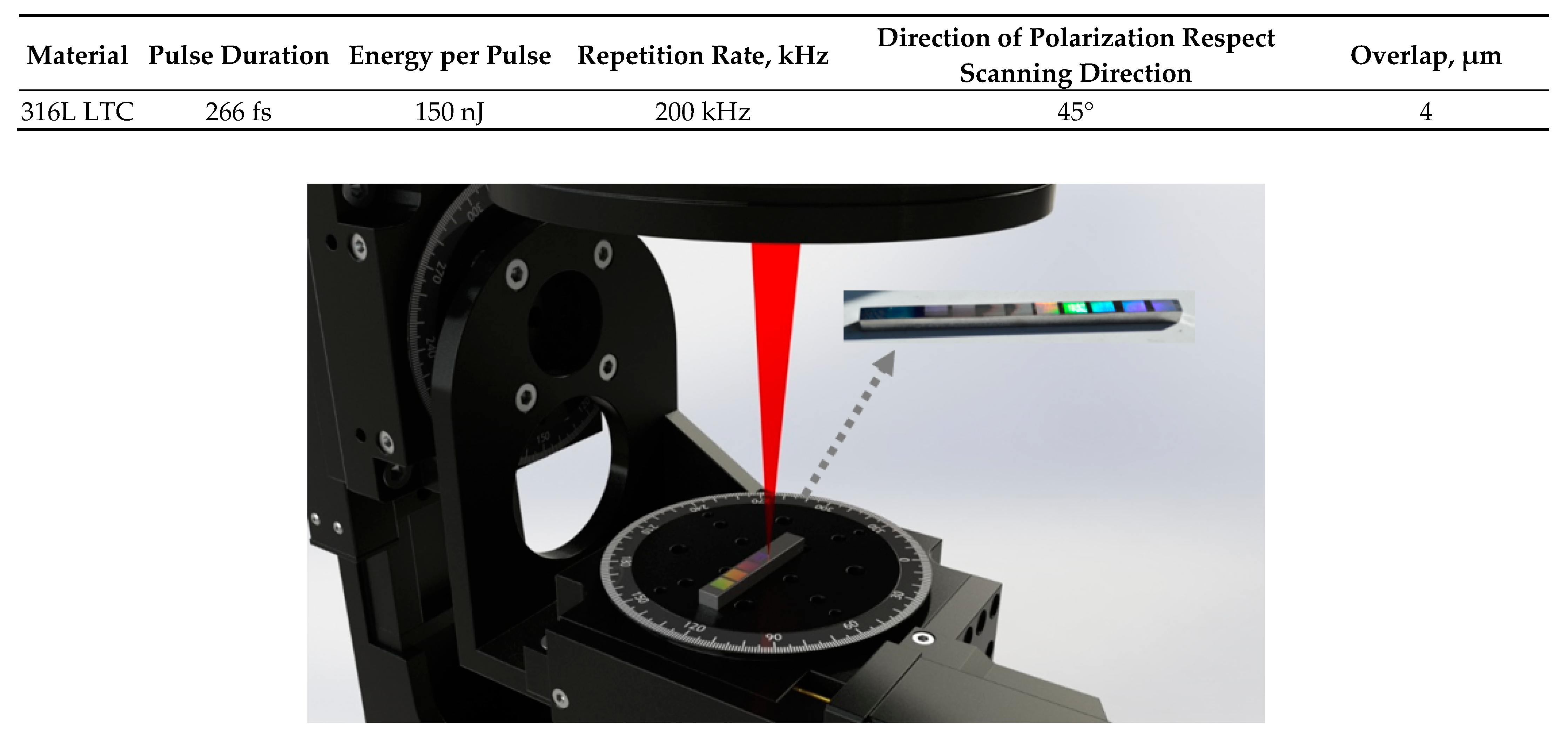
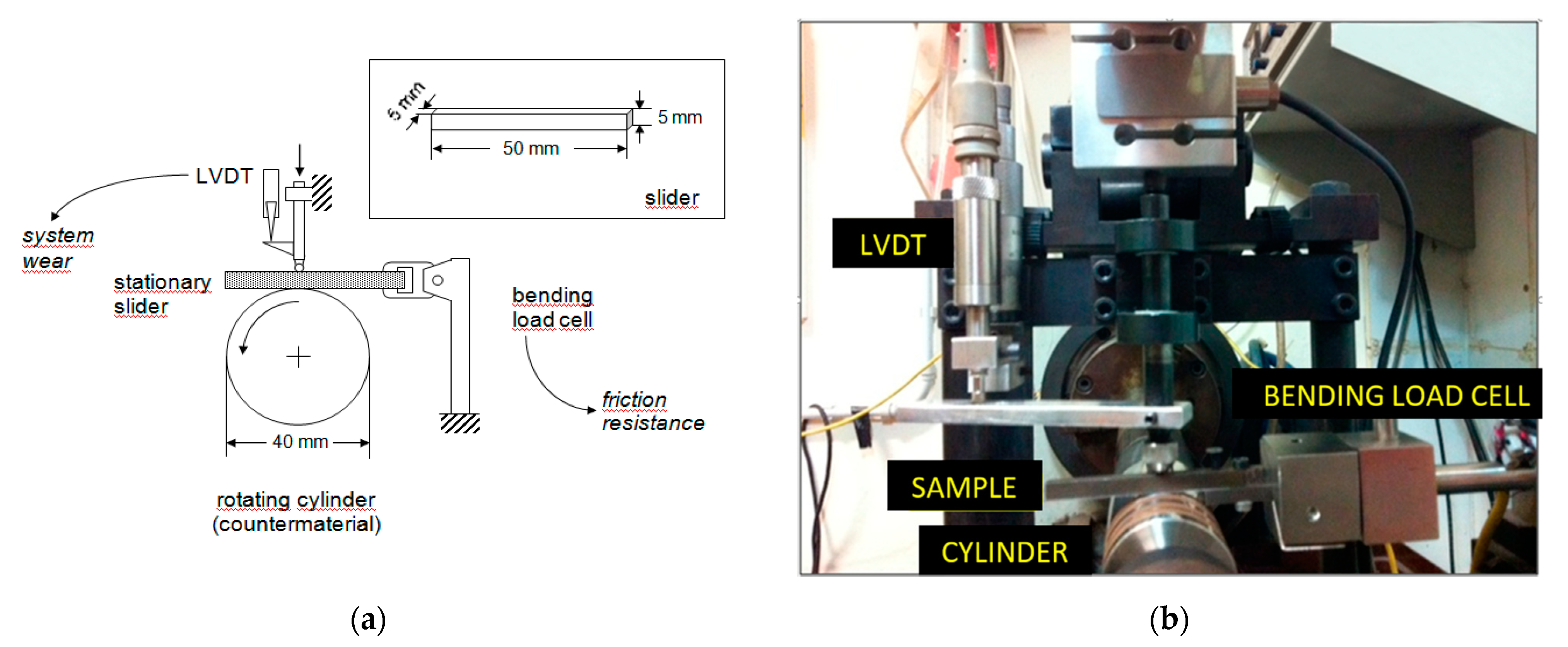
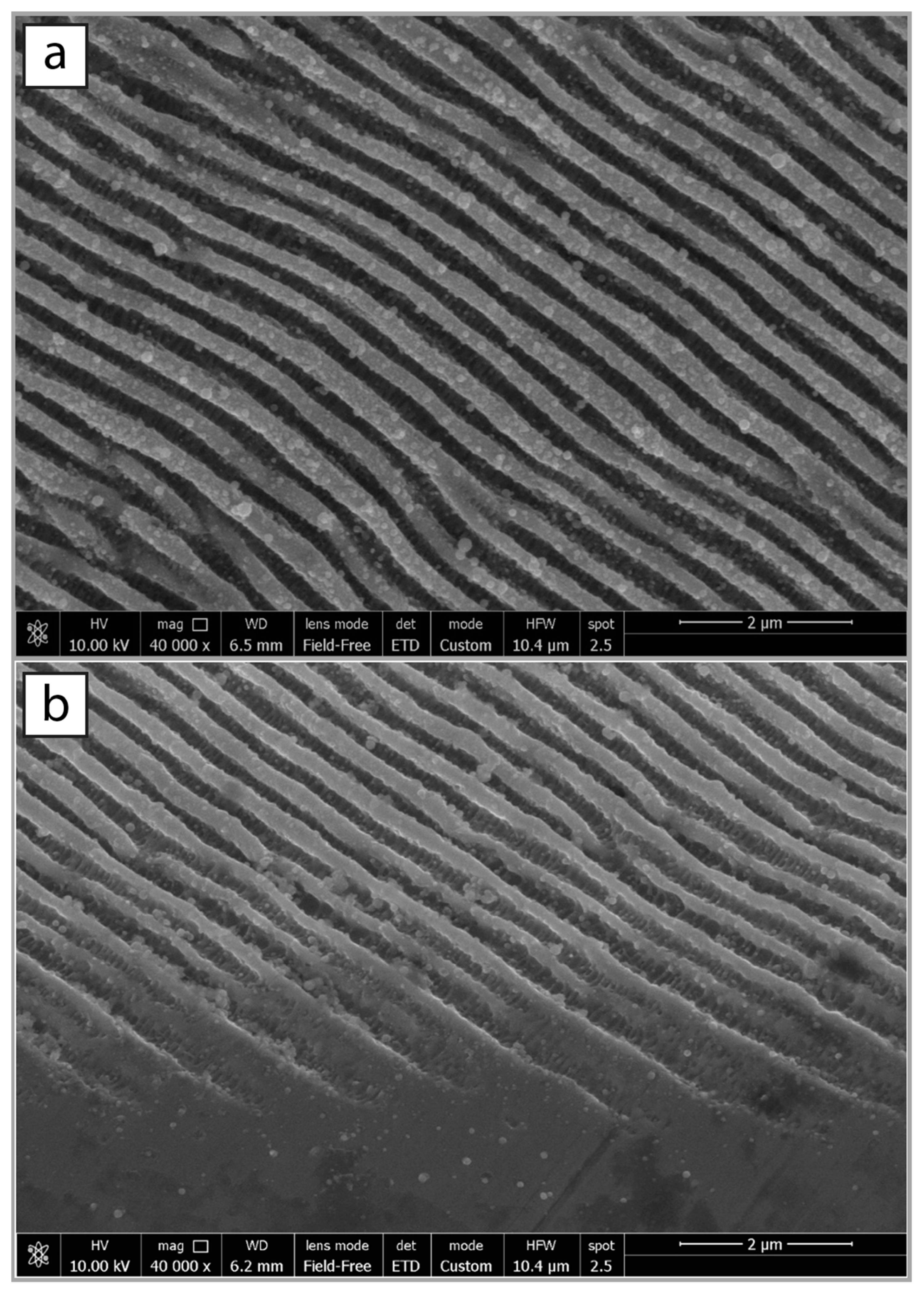
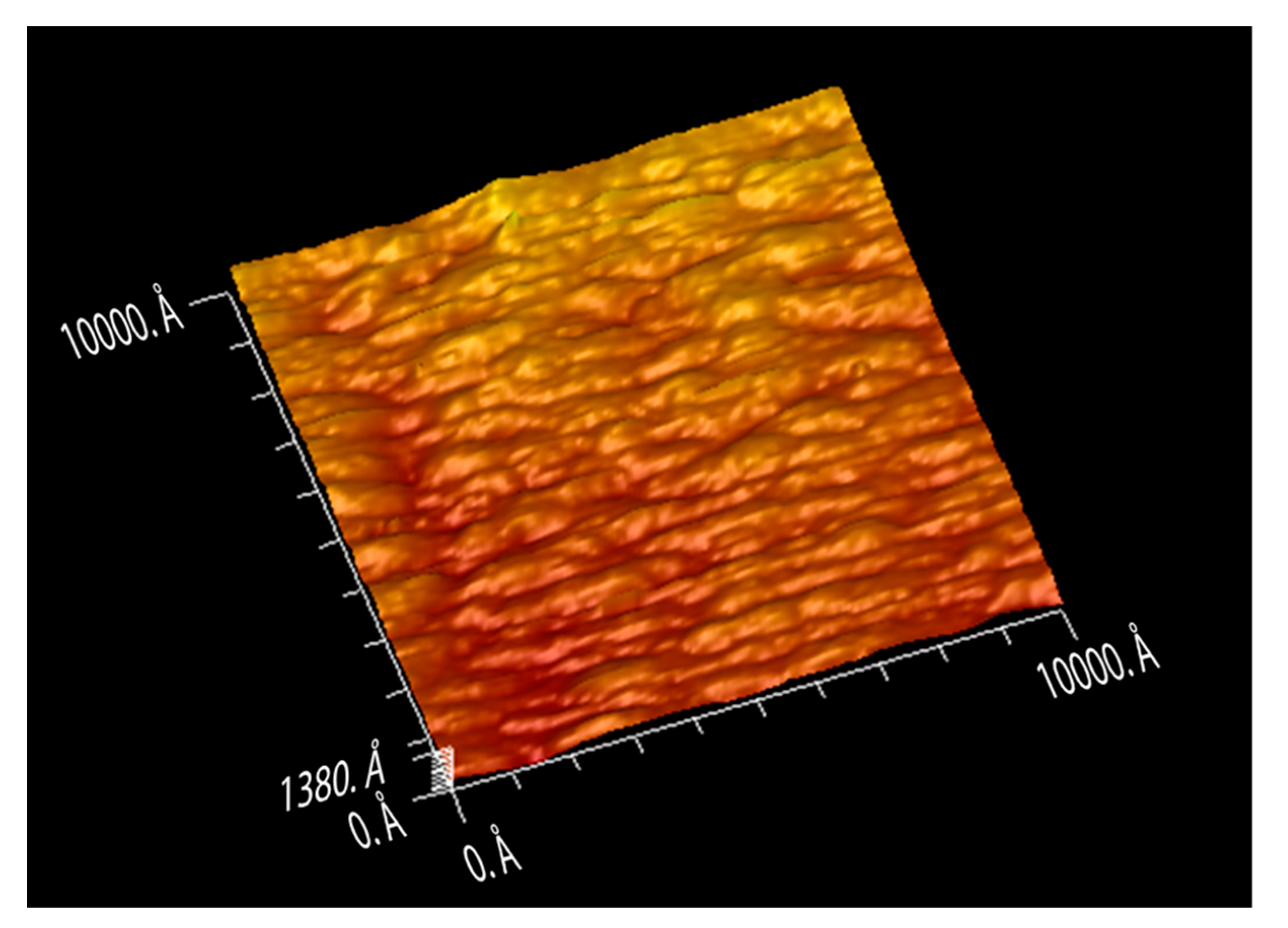
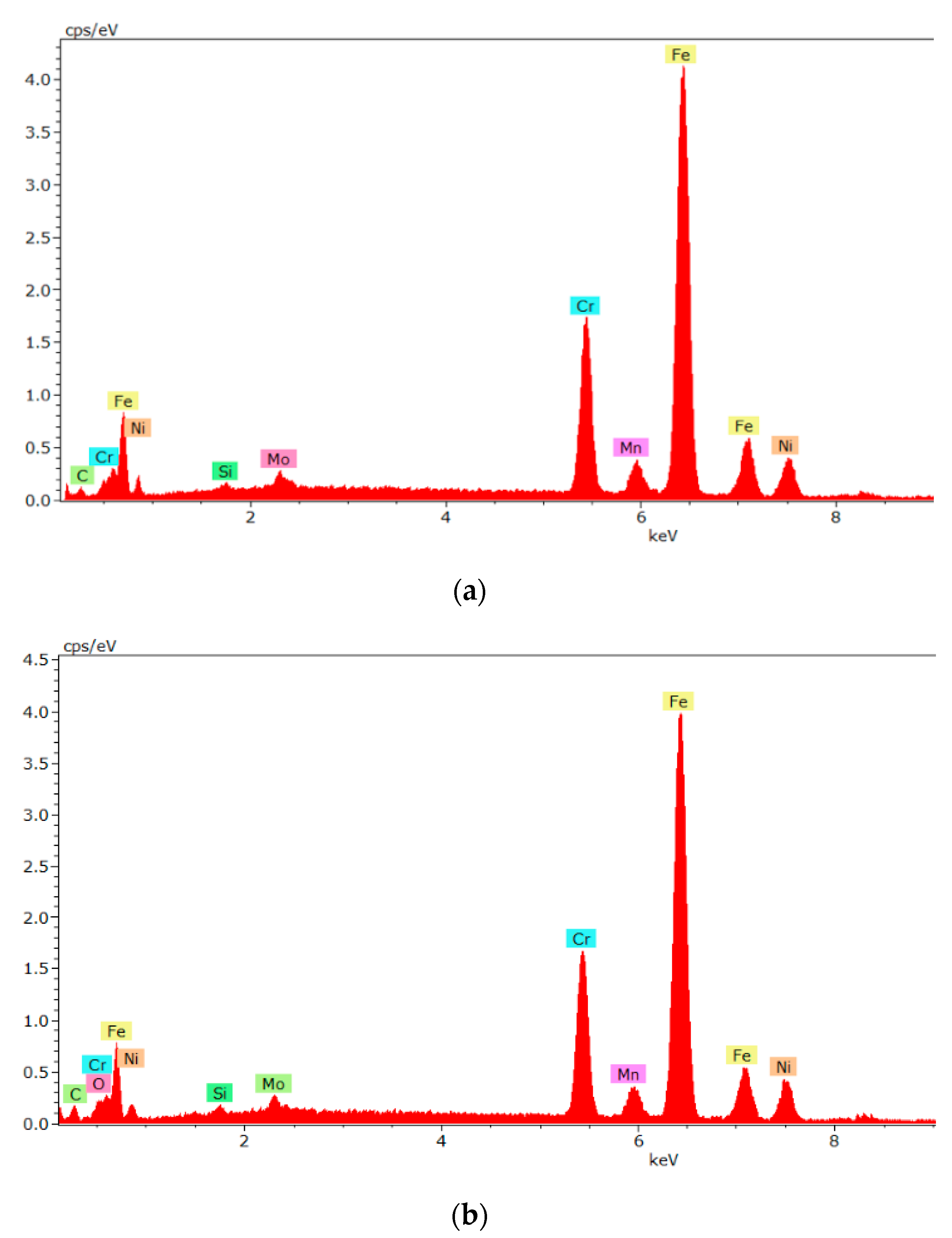
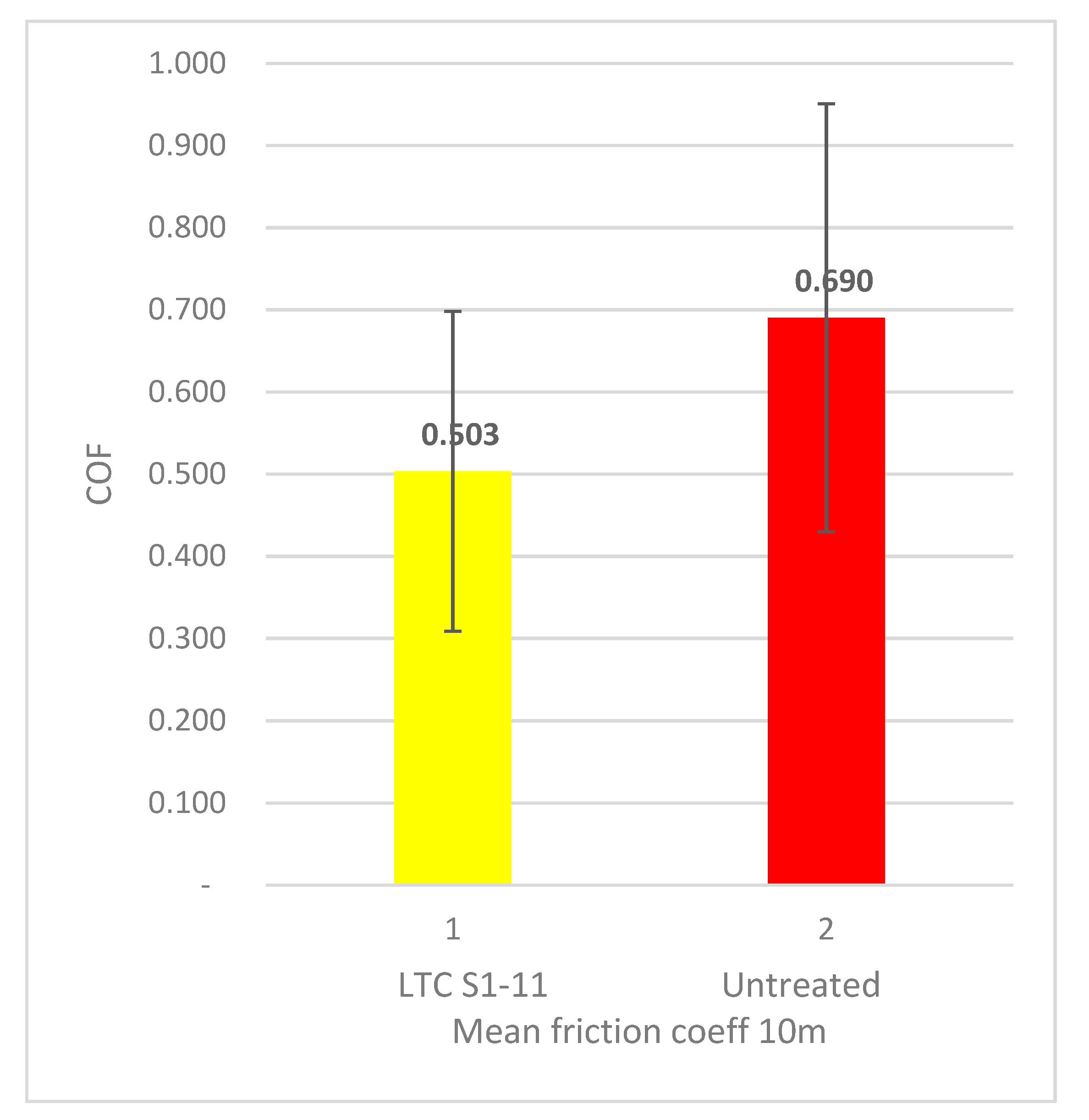
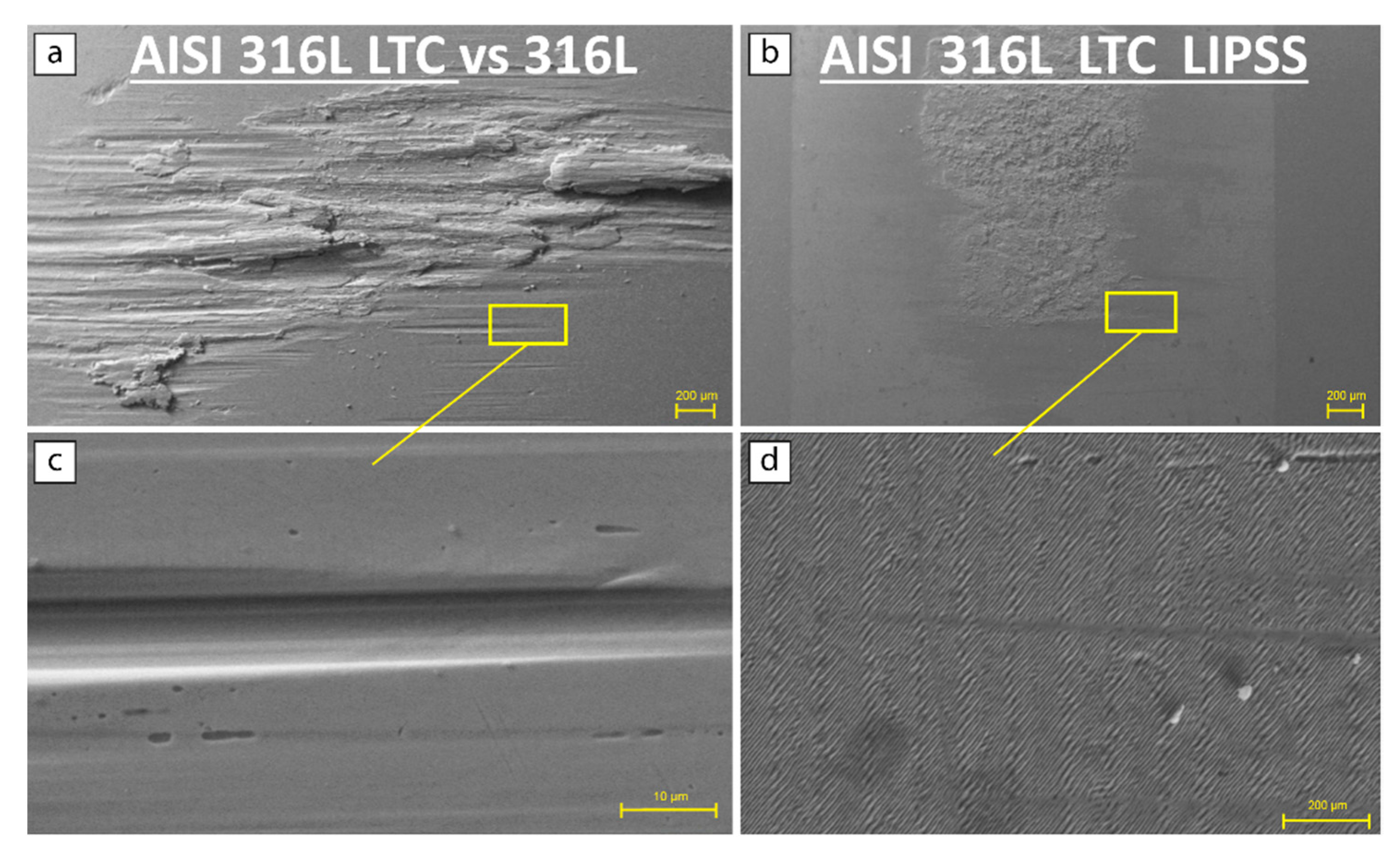
Publisher’s Note: MDPI stays neutral with regard to jurisdictional claims in published maps and institutional affiliations. |
© 2021 by the authors. Licensee MDPI, Basel, Switzerland. This article is an open access article distributed under the terms and conditions of the Creative Commons Attribution (CC BY) license (https://creativecommons.org/licenses/by/4.0/).
Share and Cite
Alnusirat, W.; Kyrychok, M.; Bellucci, S.; Gnilitskyi, I. Impact of Ultrashort Laser Nanostructuring on Friction Properties of AISI 314 LVC. Symmetry 2021, 13, 1049. https://doi.org/10.3390/sym13061049
Alnusirat W, Kyrychok M, Bellucci S, Gnilitskyi I. Impact of Ultrashort Laser Nanostructuring on Friction Properties of AISI 314 LVC. Symmetry. 2021; 13(6):1049. https://doi.org/10.3390/sym13061049
Chicago/Turabian StyleAlnusirat, Walid, Maksym Kyrychok, Stefano Bellucci, and Iaroslav Gnilitskyi. 2021. "Impact of Ultrashort Laser Nanostructuring on Friction Properties of AISI 314 LVC" Symmetry 13, no. 6: 1049. https://doi.org/10.3390/sym13061049
APA StyleAlnusirat, W., Kyrychok, M., Bellucci, S., & Gnilitskyi, I. (2021). Impact of Ultrashort Laser Nanostructuring on Friction Properties of AISI 314 LVC. Symmetry, 13(6), 1049. https://doi.org/10.3390/sym13061049







